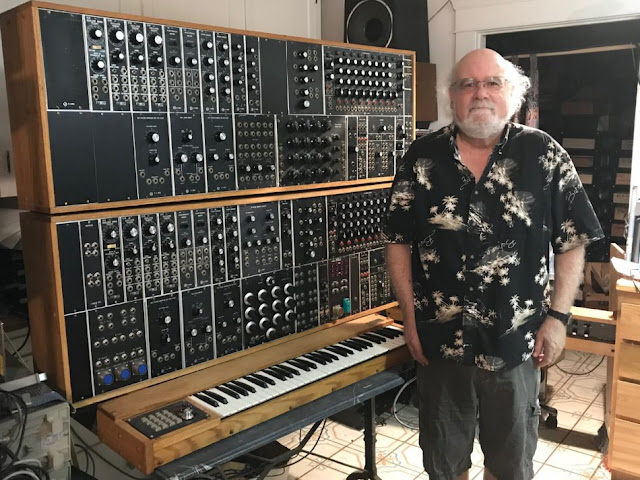via
The Bob Moog Foundation
"We are thrilled to announce our collaboration with Waveshaper Media, the producers of the acclaimed modular documentary “I Dream of Wires”, on a new film about Bob Moog, Electronic Voyager.
A
Kickstarter campaign in support of Electronic Voyager has begun.
In association with the Wave Shaper, we aim to create a definitive and personal documentary about the life of Bob Moog. Through the eyes of our Executive Director and Bob’s own daughter, Michelle Moog-Koussa – also a dedicated Moog archivist and historian – we will give viewers an insight into the man behind the iconic Moog brand.
Electronic Voyager takes us on a sonic journey into the often unpredictable life and stunning brilliance of Bob Moog, a man who ‘fell backwards on a banana peel’ into the music instrument business, as well as the psychedelic world of the 1960s music scene. Bob unwittingly revolutionized the face of music, and helped birth an enduring industry.
With Michelle Moog-Koussa as our guide, we are in a very unique position to tell Bob Moog’s story in a new and profound way – from the perspective of his own daughter, who has not only a deep personal connection to Bob Moog, but also a firm dedication to his work and legacy. Bob’s friends, associates and admirers open up when they speak to Michelle about her father, leading to uniquely candid, revealing and joyous stories and insights about Bob Moog.
Electronic Voyager documents a special personal journey for Michelle, to trace her father’s iconic story – visiting the places and meeting the people who were a part of Moog’s history. With exclusive access to unseen family photos and rare historical artifacts from the Bob Moog Foundation Archives, Electronic Voyager opens a window for the outside world to better understand the man behind the legendary Moog synthesizer.
Support the
Kickstarter campaign here.
The recent, tragic passing of Bob Moog’s close friend and important collaborator, Keith Emerson – perhaps the most iconic Moog keyboardist – was just another reminder of how important it is to document Bob Moog’s crucial chapter in the history of electronic music, NOW. We are turning to Kickstarter – a direct link to Bob Moog’s friends, admirers and fans – to help us get to work on this important documentary as soon as possible.
Confirmed participants include:
Early electronic music pioneers: Herb Deutsch, Morton Subotnick, Bernie Krause (Beaver & Krause, Moog modular session musician – George Harrison, The Doors), Joel Chadabe, David Borden (Mother Mallard’s Portable Masterpiece Company).
Contemporary Moog musicians: Moby, Adrian Utley (Portishead, Moog Ensemble).
Friends and music industry contemporaries: Dave Smith (Sequential Circuits), Tom Oberheim, Roger Linn, Dave Rossum (E-mu), Mark Vail (Keyboard Magazine), David Mash (Berkelee College of Music), Dominic Milano (Keyboard Magazine), Wayne Kirby (University of North Carolina – Asheville).
Session musicians, composers, technicians: Patrick Gleeson (Herbie Hancock, film composer), Greg Phillenganes (Stevie Wonder, Michael Jackson), Edd Kalehoff (tv/film composer), Michael Boddicker (Michael Jackson, film composer), Will Alexander (Keith Emerson’s synth tech).
Moog employees/collaborators: Bill Hemsath, David VanKoevering, Tom Rhea, Roger Luther, Greg Hockman, Tom Gullo, Dale Ong.
As with any great Kickstarter campaign, we are offering a host of exciting perks, many of which are limited to the campaign and are not available elsewhere. Read all about them and get more details about the project here:
http://tinyurl.com/ElectronicVoyagerKickstarter
Please join us on this incredible journey, the sonic journey of Bob Moog!"
 via Dr. Patrick Gleeson on MySpace:
via Dr. Patrick Gleeson on MySpace:



























































